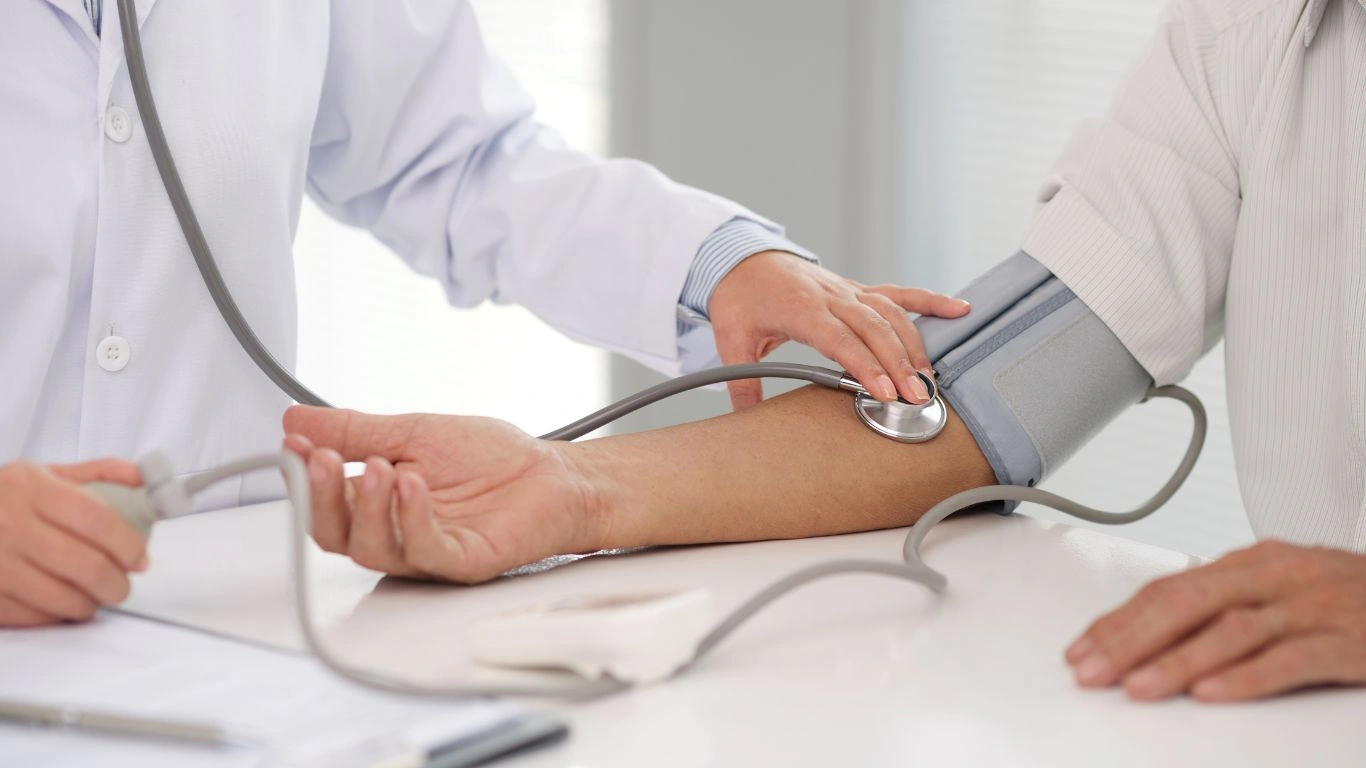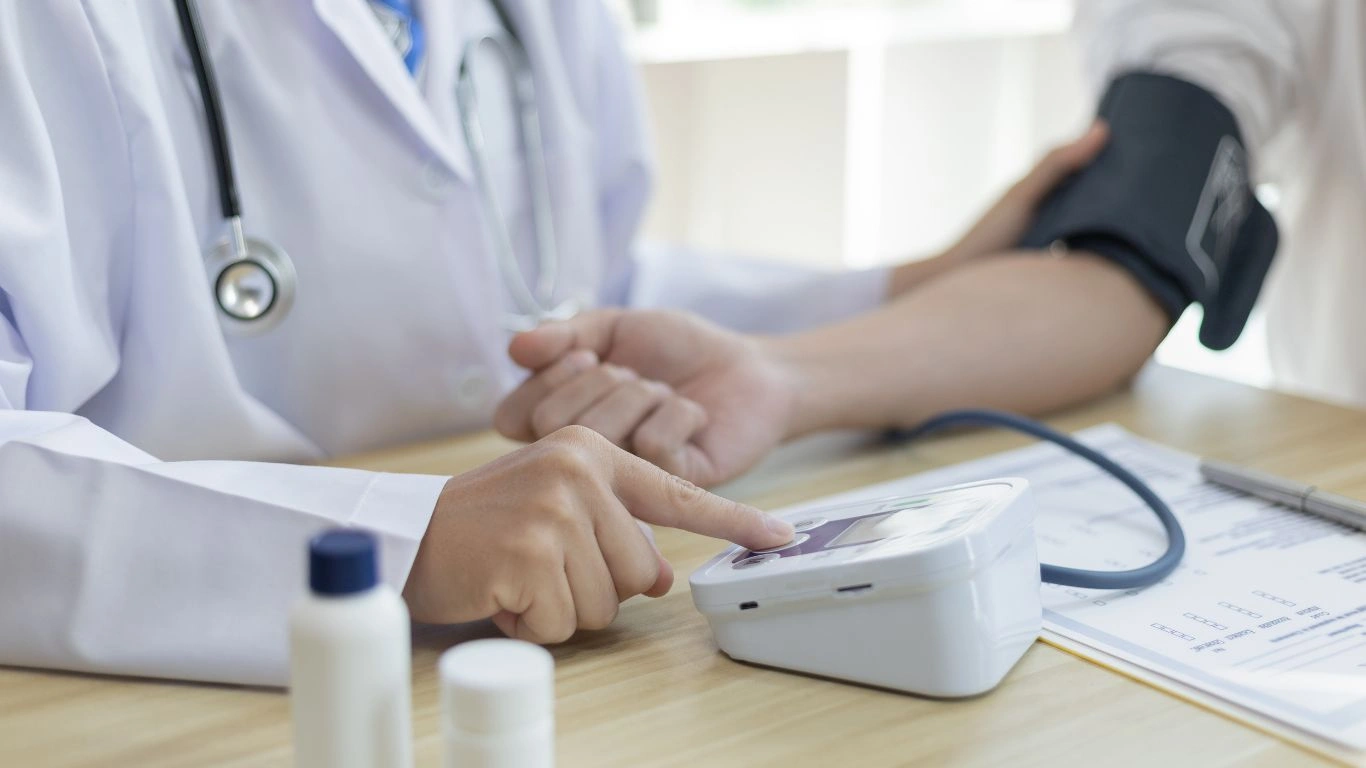Best Workouts to Lower Blood Pressure Naturally & Stay Healthy
Blood pressure is one of those things that seems to sneak up on us with age. One day, you’re feeling great, and the next, your doctor is talking about numbers that suddenly matter way more than they used to. How age affects blood pressure regulation is a crucial topic because, let’s be honest, none of us are getting any younger. As a hypertension specialist, I’ve seen firsthand how aging plays a role in blood pressure shifts—and more importantly, how we can stay ahead of it.
Understanding Blood Pressure Regulation
Before diving into how aging changes things, let’s quickly go over how blood pressure works. Your heart pumps blood through arteries, creating pressure against the artery walls. This pressure is influenced by several factors, including:
- Heart health: A strong heart pumps blood efficiently, while a weaker heart struggles.
- Artery elasticity: Flexible arteries adjust to blood flow, but stiff arteries create resistance.
- Kidney function: Your kidneys help balance fluids and sodium, which impacts blood pressure.
- Nervous system signals: Your body has built-in mechanisms to keep blood pressure stable.
When we’re young, these systems work like a well-oiled machine. But as we age? Well, that’s where things start to change.
How Age Affects Blood Pressure Regulation

Aging doesn’t just bring wisdom—it also brings changes to the cardiovascular system that can make blood pressure regulation trickier. Some of the biggest culprits include:
1. Arteries Lose Their Flexibility
Think of your arteries like rubber bands. When you’re young, they stretch and bounce back easily. But over time, they lose elasticity, becoming stiffer. This means your heart has to work harder to push blood through, leading to higher blood pressure. I’ve had many patients in their 50s and 60s who say, “But I’ve always had normal blood pressure!” only to see it creep up as their arteries naturally stiffen.
2. The Heart Works Harder
With age, the heart muscle itself can undergo changes. It might thicken slightly due to years of pumping blood, which sounds like a good thing—until you realize it can reduce efficiency. A less efficient heart means it has to pump harder, which can raise blood pressure. This is why even people who feel “perfectly healthy” can end up with hypertension in their later years.
3. Kidneys and Sodium Sensitivity
Your kidneys are your body’s natural filters, helping to regulate fluids and sodium levels. But as we age, kidney function gradually declines. This means your body holds onto more sodium, which leads to water retention—and higher blood pressure. If you’ve ever noticed that salty foods seem to affect you more now than they did in your 20s, your kidneys are likely the reason.
Common Blood Pressure Patterns with Aging

Not everyone experiences blood pressure changes in the same way, but some common trends I’ve observed include:
- Rising systolic pressure: The top number (systolic pressure) tends to increase due to artery stiffness.
- Stable or dropping diastolic pressure: The bottom number (diastolic pressure) may stay the same or even decrease, leading to a higher pulse pressure.
- Higher risk of morning hypertension: Blood pressure often spikes in the early morning hours, which can increase heart attack risk.
Understanding these patterns can help us take action before they become a problem.
Why You Should Pay Attention to These Changes

Here’s the tricky part—many people don’t feel symptoms of high blood pressure until it’s already causing damage. This is why regular monitoring is so important. I’ve had patients who were shocked to find their blood pressure creeping up despite feeling “fine.” The reality is, untreated hypertension can lead to heart attacks, strokes, and kidney disease.
That’s why I always say: If you’re over 40, start paying attention to your numbers. And if you’re over 60? Blood pressure should be a regular part of your health checkups, just like cholesterol and blood sugar.
How Lifestyle Choices Can Offset Age-Related Blood Pressure Changes

Here’s the good news—just because blood pressure tends to rise with age doesn’t mean we’re powerless against it. Over the years, I’ve seen patients in their 50s and 60s successfully keep their blood pressure in check simply by making smart lifestyle choices. Small changes can have a huge impact, and the earlier you start, the better.
1. Staying Active Keeps Blood Pressure in Check
I can’t stress this enough—movement is medicine. The heart is a muscle, and like any muscle, it gets stronger with exercise. But here’s where it gets tricky: as we age, we tend to slow down. Maybe it’s joint pain, maybe it’s fatigue, or maybe we just don’t feel like moving as much. The problem is, less movement means weaker circulation and higher blood pressure.
What works best? A mix of aerobic exercise (like walking, swimming, or cycling) and strength training. I always recommend my patients aim for at least 30 minutes of moderate exercise most days. If that sounds like too much, start with 10-minute walks after meals—it’s a game changer.
2. Managing Stress the Right Way
Ever notice how stressful situations make your heart race? That’s your body releasing cortisol, a stress hormone that temporarily raises blood pressure. When stress becomes chronic, it can keep your blood pressure elevated over time.
In my practice, I’ve seen countless patients improve their numbers simply by managing stress better. Some great ways to do this include:
- Deep breathing techniques: A few minutes of slow, deep breaths can lower blood pressure instantly.
- Meditation and mindfulness: Just 10 minutes a day can reduce stress hormones.
- Finding enjoyable hobbies: Whether it’s gardening, painting, or playing music—relaxation is key.
- Prioritizing sleep: Poor sleep quality is directly linked to higher blood pressure.
One of my patients once told me, “I thought stress was just part of life, but when I actually started relaxing more, my blood pressure dropped naturally.” That says it all.
Dietary Adjustments for Healthier Blood Pressure

If there’s one thing I always tell my patients, it’s this: what you eat directly impacts your blood pressure. The tricky part? As we age, our metabolism slows down, and our body doesn’t handle certain foods the way it used to. Here are some dietary tweaks that make a difference.
1. Cut Back on Sodium (But Not Completely!)
Salt and blood pressure go hand in hand, but here’s something people often misunderstand: it’s not about eliminating salt altogether. Instead, it’s about being mindful of where your sodium is coming from.
Processed and packaged foods are the biggest culprits. I once had a patient who barely added salt to her meals but was eating canned soups daily—her blood pressure was through the roof. The solution? More fresh, whole foods and less processed junk.
2. Increase Potassium-Rich Foods
Potassium is the unsung hero of blood pressure control. It helps balance out the effects of sodium and keeps blood vessels relaxed. Foods high in potassium include:
- Bananas
- Sweet potatoes
- Spinach
- Beans and lentils
- Avocados
If you’re eating more potassium and less sodium, you’re already ahead of the game.
3. Embrace the DASH Diet
Ever heard of the DASH diet? It stands for Dietary Approaches to Stop Hypertension, and it’s one of the most well-researched ways to keep blood pressure in check. It focuses on:
- Plenty of fruits and vegetables
- Whole grains instead of refined ones
- Healthy fats from nuts, seeds, and olive oil
- Low-fat dairy instead of full-fat versions
- Leaner protein sources like fish, chicken, and beans
Many of my patients who adopt this way of eating see results in just a few weeks—lower numbers, better energy, and an overall healthier heart.
How Regular Blood Pressure Monitoring Can Save Your Life
One of the simplest, yet most effective things you can do as you age? Monitor your blood pressure regularly. High blood pressure is often called the “silent killer” because it doesn’t always cause noticeable symptoms. That’s why checking it consistently is so important.
I always recommend:
- Checking at home: Get a reliable home blood pressure monitor and check at different times of the day.
- Tracking your numbers: Keep a journal or use a blood pressure app to see patterns over time.
- Knowing your ideal range: For most adults, the goal is below 120/80 mmHg. If you’re consistently above that, it’s time to take action.
I’ve had patients who caught early signs of hypertension simply because they took the time to monitor at home. A few small lifestyle tweaks later, and they avoided needing medication altogether.
Case Studies & Real-Life Examples

Let’s talk about some real people who’ve successfully managed their blood pressure through lifestyle changes. I’ve worked with patients who believed they were destined for high blood pressure simply because it “ran in the family.” But guess what? That’s not always the case. Genetics play a role, sure, but lifestyle is the real game-changer.
Case Study 1: The Power of Small Changes
Take Linda, a 58-year-old retired teacher. When she first came to me, her blood pressure was hovering around 145/90 mmHg. She wasn’t on medication yet, but her doctor warned her that if she didn’t make changes, she’d be prescribed some soon.
We started small: daily 20-minute walks, switching out processed foods for fresh meals, and adding potassium-rich foods to her diet. Within three months, her numbers dropped to 125/82 mmHg. No medication, no drastic diets—just consistent, sustainable habits.
Case Study 2: Stress Management Made the Difference
Then there’s Mark, a 52-year-old business executive. His blood pressure was sky-high at 155/95 mmHg, and stress was the main culprit. He lived off caffeine, skipped meals, and barely slept. When I suggested meditation, he laughed. “I don’t have time for that,” he said.
But after a little convincing, he agreed to try 5-minute breathing exercises before bed. Within weeks, he started sleeping better, and his numbers began improving. Combined with better eating habits and light exercise, he eventually stabilized at 128/84 mmHg.
Key Takeaways: What You Need to Remember
By now, you’ve got a solid understanding of how to manage blood pressure naturally. But let’s wrap up with the biggest take-home messages:
- Blood pressure naturally rises with age, but that doesn’t mean you have to accept it.
- Exercise matters—even small amounts of daily movement make a difference.
- Stress management is crucial; deep breathing, meditation, and quality sleep can significantly lower blood pressure.
- Diet plays a huge role; reducing sodium, increasing potassium, and following a heart-healthy diet like DASH can help.
- Regular monitoring saves lives—know your numbers and track them over time.
It’s never too late to take control of your health. Small, consistent efforts lead to long-term benefits.
FAQs
Still have questions? Here are some of the most common ones I hear:
1. Can I lower my blood pressure without medication?
Yes! Many people successfully manage their blood pressure through diet, exercise, stress reduction, and proper sleep. However, always consult your doctor before stopping any prescribed medication.
2. How long does it take to see results from lifestyle changes?
It depends on the person, but many people notice improvements within a few weeks to months. The key is consistency.
3. Are there specific foods that lower blood pressure instantly?
While no food will drop your blood pressure immediately, potassium-rich foods like bananas, spinach, and avocados help balance sodium levels over time.
4. Is high blood pressure reversible?
In many cases, yes. If caught early and managed well, blood pressure can return to a healthy range without medication.
Bonus: Additional Resources or DIY Tips
If you’re looking for more ways to keep your blood pressure in check, here are some quick DIY tips:
- Make your own low-sodium spice blends: Replace salt with garlic powder, onion powder, turmeric, and herbs.
- Try home blood pressure monitoring: Get an easy-to-use digital monitor and track your readings at different times of the day.
- Drink hibiscus tea: Some studies suggest it can help lower blood pressure naturally.
- Practice gratitude journaling: Believe it or not, reducing stress through gratitude can have a direct impact on blood pressure.
Appendix: References, Disclaimer, and Call to Action
For further reading, check out these trusted sources:
Disclaimer: This article is for informational purposes only and is not intended as medical advice. Always consult your doctor before making any changes to your health routine.
Take the Next Step: Ready to take control of your blood pressure? Start small. Pick one tip from this article and put it into practice today!

Dr. Gwenna Aazee is a board-certified Internal Medicine Physician with a special focus on hypertension management, chronic disease prevention, and patient education. With years of experience in both clinical practice and medical writing, she’s passionate about turning evidence-based medicine into accessible, actionable advice. Through her work at Healthusias.com, Dr. Aazee empowers readers to take charge of their health with confidence and clarity. Off the clock, she enjoys deep dives into nutrition research, long walks with her rescue pup, and simplifying medical jargon one article at a time.






